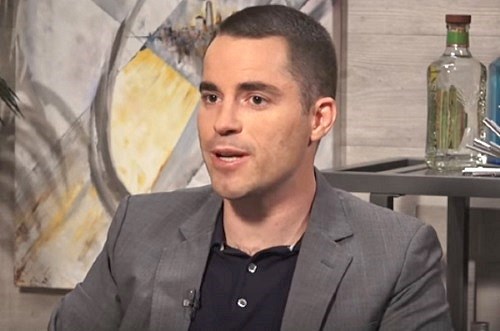2018-12-18 22:45 |
Is The Road Ahead A Dark One For Bitcoin? Experts Give Their Opinions On The Cryptocurrency And Blockchain Market
It's no lie to say that the blockchain and cryptocurrency worlds have been undergoing some scepticism and even more in the way of decline. As we come to the close of 2018, we are experiencing one of the longest bearish markets for it in its collective history.
Meanwhile, the applications of blockchain in the worlds of finance, health, education, gaming, etc, have been somewhat blunted by a declining crypto market. With more bears comes a higher aversion to the risks it pertains to.
But as we more into 2019, are the doomsayers right when they talk about 2018 spelling the end for Bitcoin and the like? Well, the narrative appears to be a far more complex one in the opinions of financial experts and Nobel Laureates. We take this opportunity to bring you some of their thoughts.
“It Isn't The Fall That Gets You. It's The Sudden Stop At The Bottom.”Bearish trends in the market aside, where is Bitcoin relative to where it was at the beginning of this year? It's nearing where we may expect its new lower support to be, at least that's according to some of the thoughts provided by Brian Kelly.
Taking part in an interview with CNBC, the founder of Brian Kelly Capital argues that what detractors have pointed out about Bitcoin are already on their way to being solved. With this assumption, Kelly is . pointing to a bullish scenario as a matter of when, not if.
“For me, the Bull case and the investment case is that everything you can say is wrong with Bitcoin is going to get fixed,” Kelly argues, and continues.
“It's similar to what we've seen from the internet, and dial internet being notoriously slow… As technology got better over time, the adoption rate got better.”
It's here that Kelly makes a thoroughly valid point, but stops short of some of the intrinsic issues that Bitcoin has in terms of improving itself. In the past, its community has been a significant detraction point towards any move from a proof of work to a proof of stake consensus system.
But this is detracting from the point that developers out there are looking for solutions. Ones such as MimbleWimble prove that the community knows that improvements need to be made.
So what is the ideal scenario? If Bitcoin upgrades its network, taking care of what needs to be sorted, what sort of threshold will it need to hit for mass adoption to chime in? The answer is not that much compared to where it is now according to Kelly.
“The baseline is, you've gotta fix the issues, and you've got to have a good adoption rate,” Kelly continues.
“There was a good article recently which mentioned that 8 percent of Americans that have invested in Bitcoin, and 10 percent is the adoption rate needed, so it's just punching up close to that.”
The Timeline For Hitting The BottomBrian Kelly himself is no stranger to adversity, having been a proponent of cryptocurrencies in some shape or form since 2013. It's with that in mind that he still offers some wise words for even the most hawkish or bullish buyers of bitcoin.
“I've always said that one to five percent of your investment portfolio should be dedicated to cryptocurrencies because that's the riskiest thing you can invest in!”
From a perspective of time, Kelly sees Bitcoin edging close to the lower support, and believes the initial quarters of 2019 will act as a financial foil to the Bull year of 2017.
“We're getting close to the bottom. Where we once saw the optimism of 2017, we are seeing that reflected with pessimism as we enter 2019, so the pre-conditions are there for hitting the bottom.”
While stopping short of an empirical timeline, Kelly has his opinions about where Bitcoin will crash through, and that includes the $2,900 support. To put this in perspective, that is a more than 80 percent decline in the value of Bitcoin. But rather than putting the market on ice, investors like Brian Kelly, are seeing far more of bullish sentiment.
“I would have thought it hurt it Bitcoin, but I can just tell you from the phone calls that we're having, institutions are looking at this as ‘Ok, it's gone through a bear market, it didn't go away, so now we need to get some exposure to it.'”
For miners, the bad news of the bearish market has been blunted by a relative reduction in the break-even margin for profitability, according to Kelly, citing that this even point stands at around $3,000.
The Best Is Yet To Come For Cryptocurrencies, Innovations and CryptographyWhile cryptos may be reaching their respective bottoms and lower supports, innovation and potential for institutional use and application are nowhere near that. Speaking to Bloomberg, the Nobel Laureatte Paul Romer shared his insights on the application of Cryptography for the money of the future.
So where does this application of blockchain technology come into the world of finance and the movement of money? The answer includes a number of attributes, one among them, according to Romer – Cryptography.
“First thing that we have to consider is that Cryptography is considerably important, and it's something that we'd need to beef up our use of cryptography if we want to keep things safe and secure.”
Cryptography, for those otherwise uninitiated, is a means of securing data necessary for it and, by extension, the transaction of money. The value? Encrypting and securing data means that it is far harder to unsolicited third parties to intercept and use that information.
And consists of four major attributes:
Confidentiality – Refers to the protection of data/information from third parties and unauthorized access Privacy – This refers to the protection of information from individuals. Non-Repudiation – This means the inability to deny a specific action took place, allowing it to be a completely objective system. Integrity – This refers to an intrinsic assurance for users that manipulation can't and won't happen to their information.Simply going into superficial depth as to what cryptography is, the value of Blockchain can be made apparent. This need for cryptography, Romer explains, is down to the sheer diversity that exists with financial transactions.
“There's lots of ways to have digital, financial transactions. The best way to think of this is as an accounting system of exchange, and credit cards are an example of this.”
So where does blockchain technology come into this? Two words – Trustless Technology, as Romer explains.
“Some entity for systems of exchange working with some banks works to keep track of all of these transactions, and who owes what to whom,” Romer continues.
“The difference with Bitcoin is that it's trying to create an accounting system of exchange like that, but with nobody that you have to trust. There's a bunch of wholly independent people who have a reason, based on this idea of mining, to keep track of the Ledgers [Distributed Ledgers].”
While this year has been one of uncertainty for the cryptocurrency market, it's been an even more telling one for the stock market, and centralized banks as well. The latter of which, having been embroiled in a number of controversies, such as laundering activities perpetrated by Danske Bank, and more recent activity with Goldman Sachs.
Trust is something that centralized systems and governments are fast losing, as one Bloomberg host responds in perceived nervousness towards a trustless cryptographic ecosystem.
“In fairness, it should make you a bit nervous if you have a government that is otherwise profligate with its money and expands its deficit as a consequence. A lot of the theory behind Bitcoin and Cryptocurrencies is that people don't want to trust a government to backstop a currency.”
While some of this hesitation is well-deserved by those that are attentive of news reports, Romer argues that governments and banks have, at least, managed to create more stability during boom and bust cycles of inflation.
“This idea that the government can't handle it or can't do it right, I believe is overstated.”
But Romer is certainly a staunch advocate for innovation as a means of market growth, and he regards Blockchain technology as one of those innovations, but we're just at the tip of the iceberg when it comes to real-use cases, according to Romer.
“We haven't yet seen the full application of technologies that have been invented. Cryptography, for example, there are ways to secure all of our communications and keep our secrets secret, but they're not being used,” Romer continues.
The Invisible, Long Hand Of ApplicationWhether its for supporting the logistics, or level of information regarding a food supply chain, to the high-power world of finance, Romer expresses an understanding that there's a wide scope for blockchain to be applied.
“Being able to trace a product on a supermarket shelf right back to the supplier would be a fantastic thing. Whether on Blockchain or not.”
Tip of the iceberg or not, at this point in time, Romer appears to regard blockchains early decentralized methods as interchangeable with centralized solutions, and the former's youth and lack of use-cases may very well be the reason for that.
This is a state of affairs that will not last long, as Kelly brought up with CNBC. With a far higher rate of institutional interest, both in blockchain technology and in the cryptocurrency market, we are already seeing major companies like Amazon playing with blockchain in order to put it to work as a service tool.
Dollar Diplomacy? Is The Bitcoin A Threat To The Dollar?While we can argue that blockchain technology has created a number of winners, those that were early adopters or investors, to the companies involved in taking a high stake in cryptocurrency mining or equipment manufacture, Romer believes that Blockchain has, in its own way, generated a certain degree of inequality, which is hard to agree with.
Early adopters and investors in this technology can't be regarded as the beginnings of an unequal system, just that there were early adopters. As it reaches a point of mass adoption, the market will no longer be dictated by those who are technologically literate enough to put it to use.
But other than the kind of market that Bitcoin is involved with right now, Romer was intrigued by the prospect of Bitcoin as a rival to the US Dollar. It was an intriguing question, but one that he perceived as having no immediate imposing force on the American currency.
“I'd predict that in a hundred years, there will be at least a second alternative to the Dollar and the Fed [Federal Reserve] as a clearing bank for the world… And that is still up for grabs right now.”
origin »High Performance Blockchain (HPB) на Currencies.ru
|
|
















